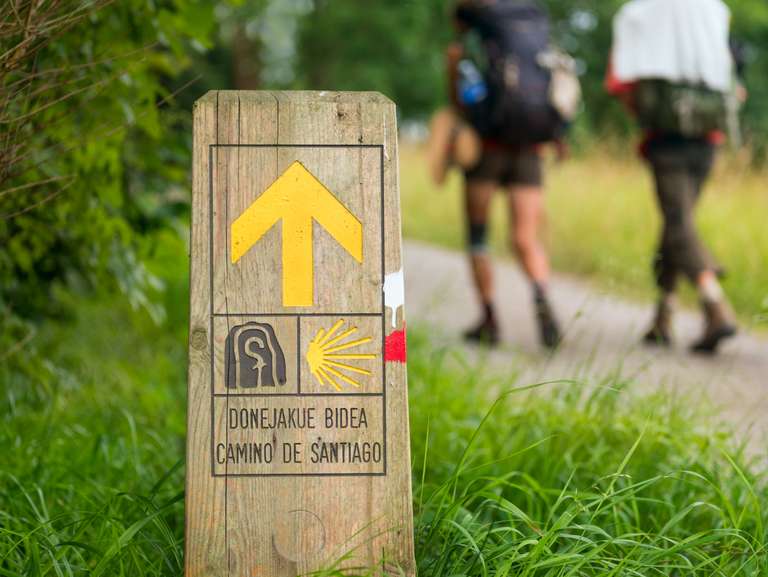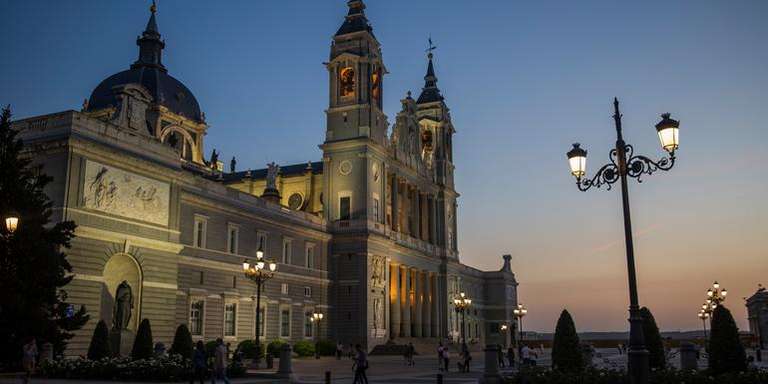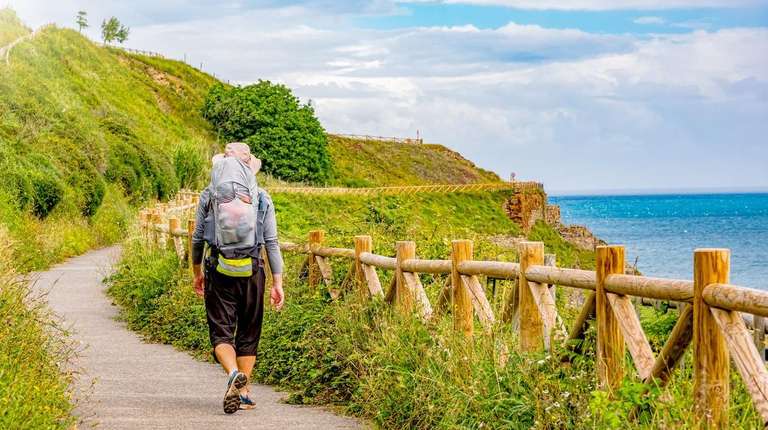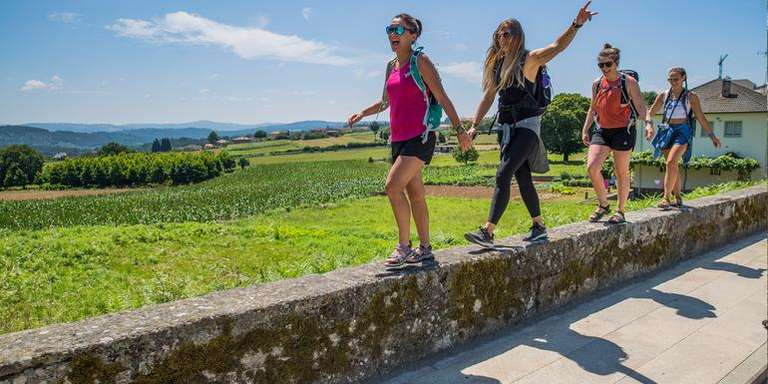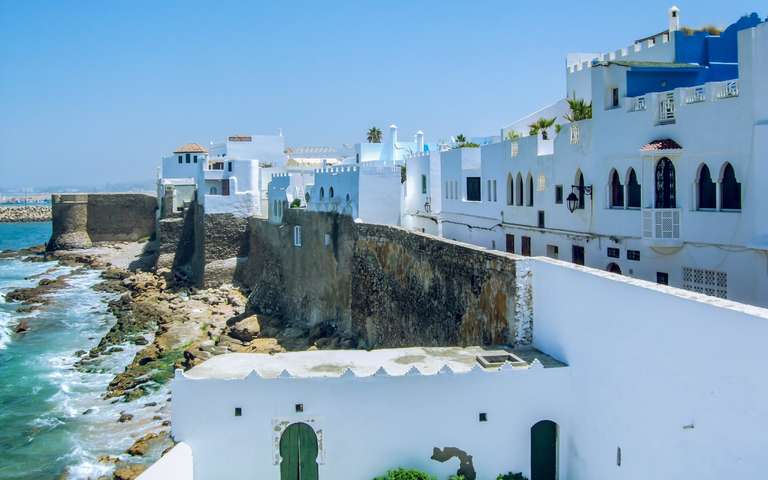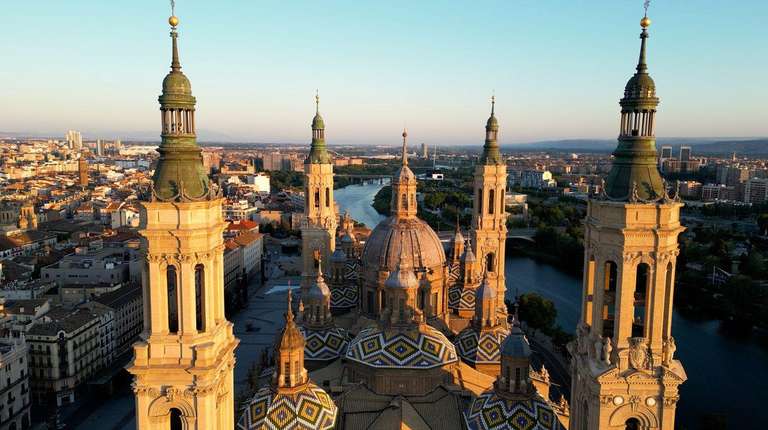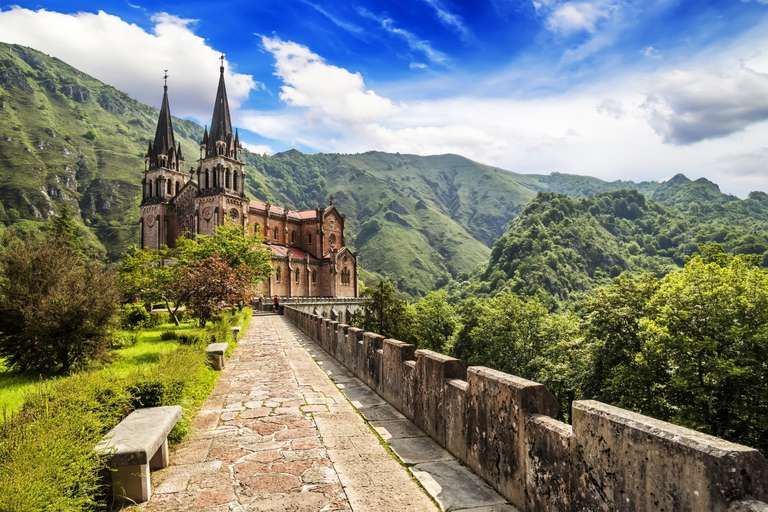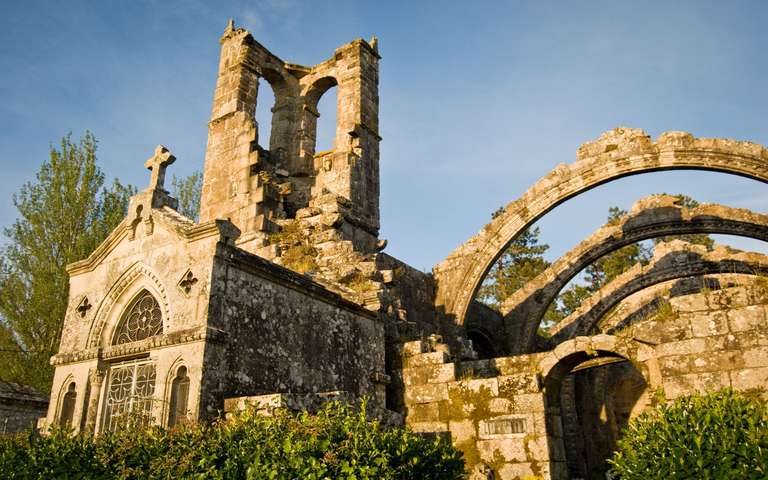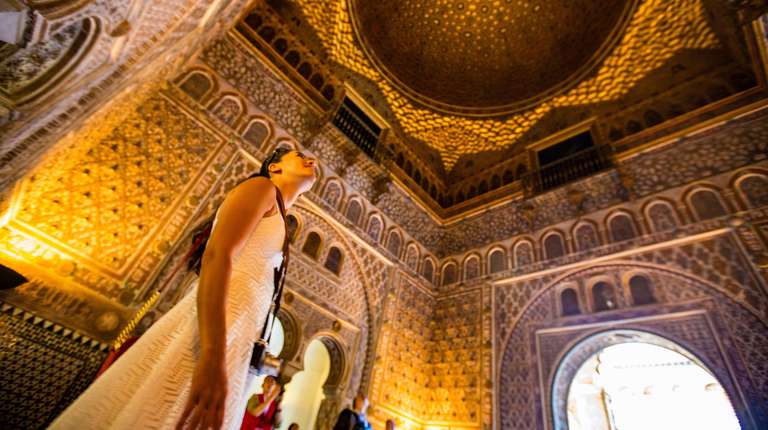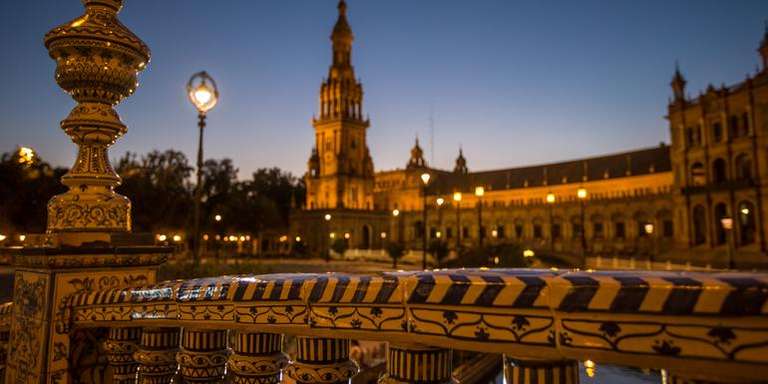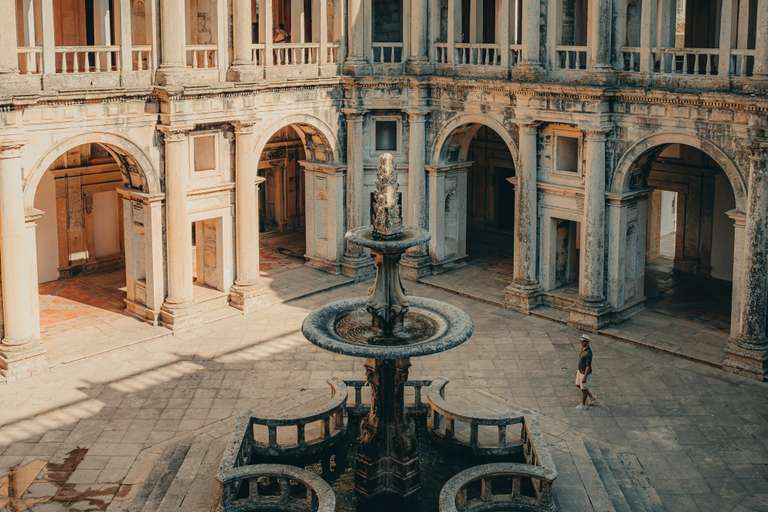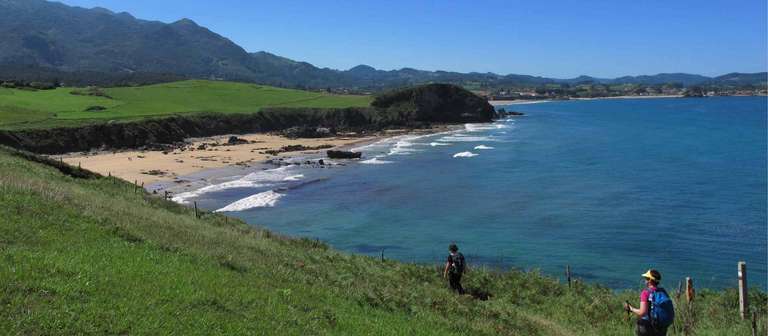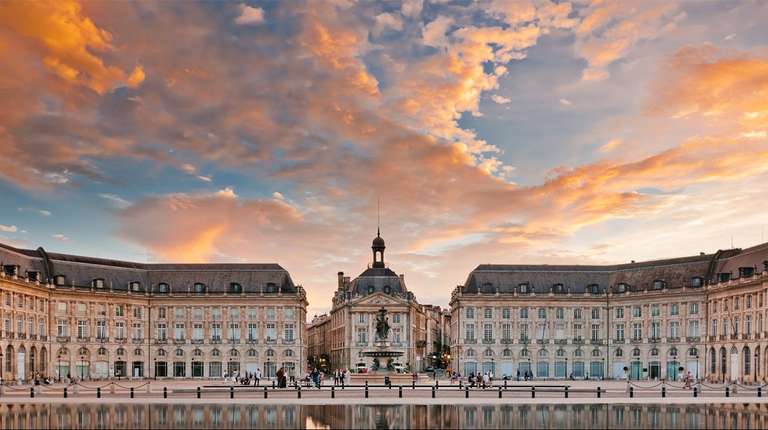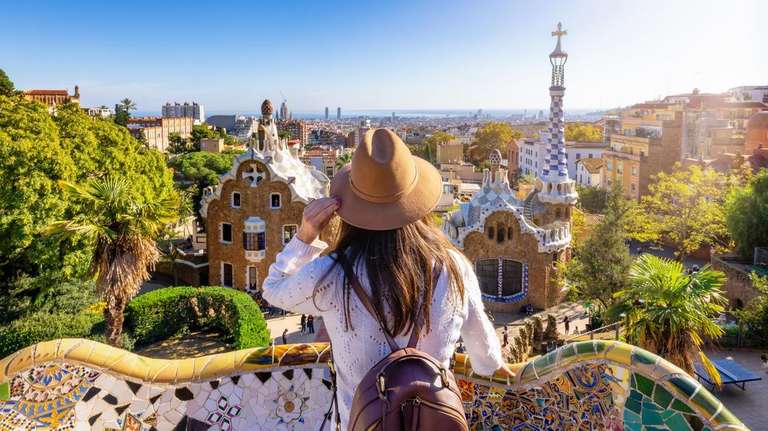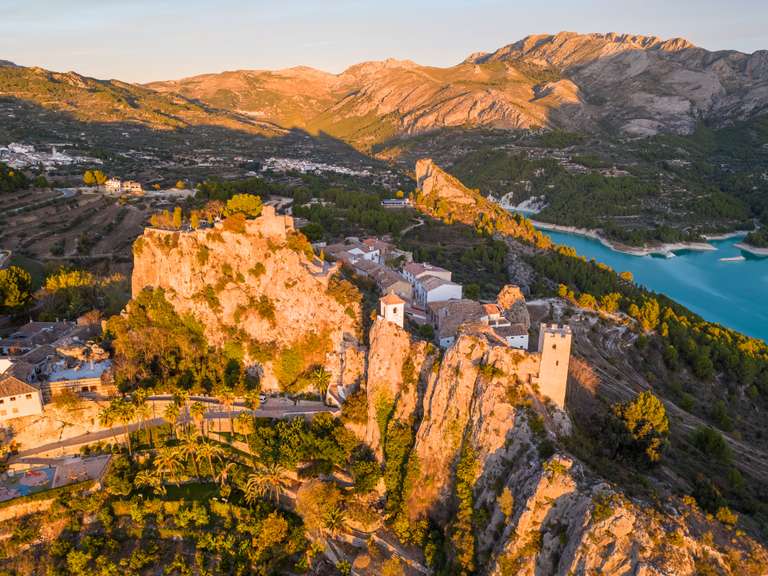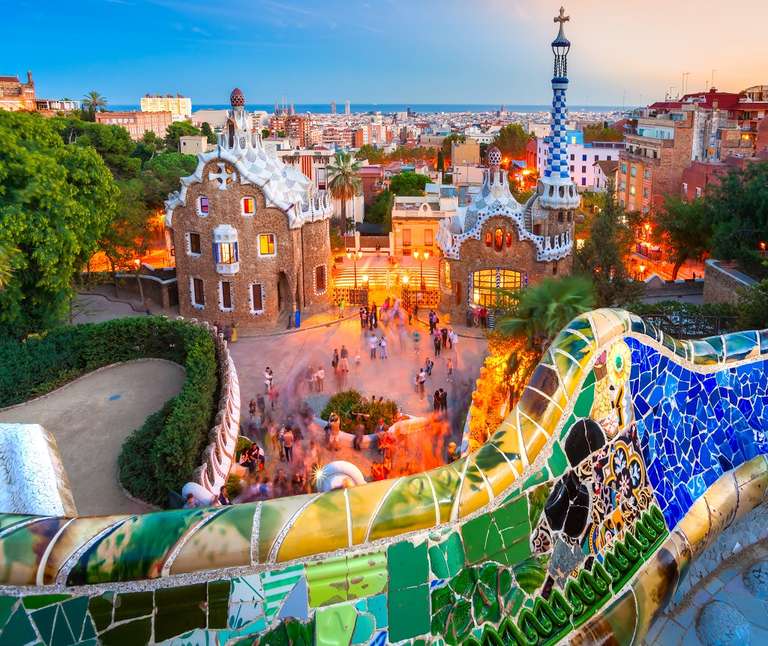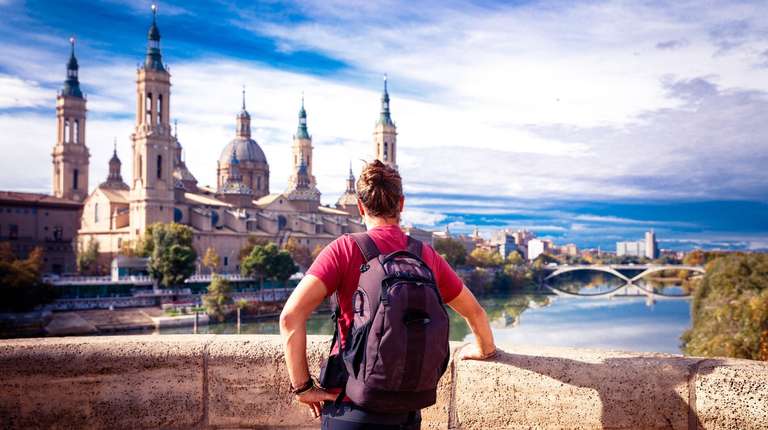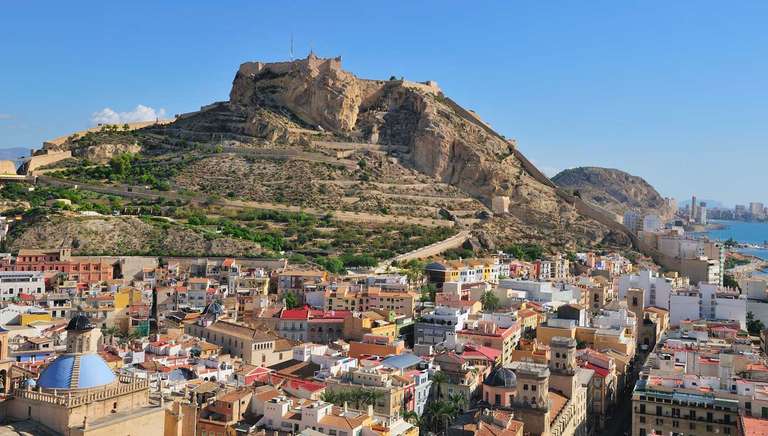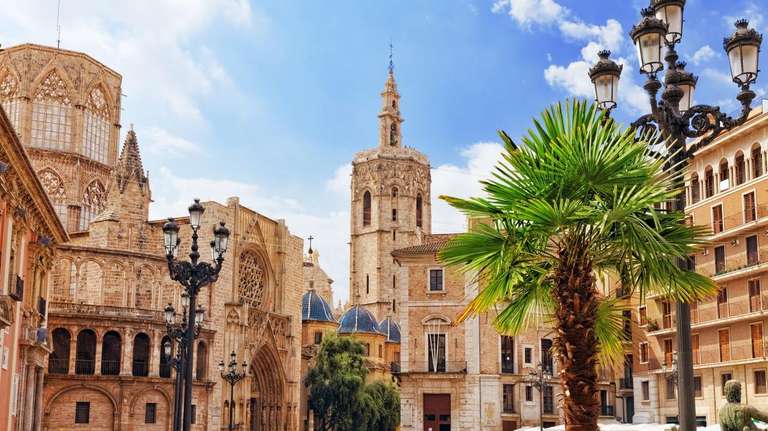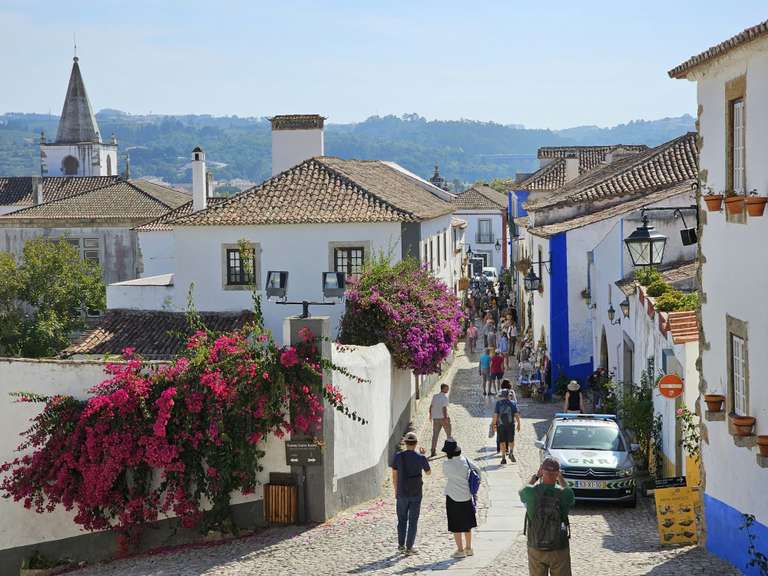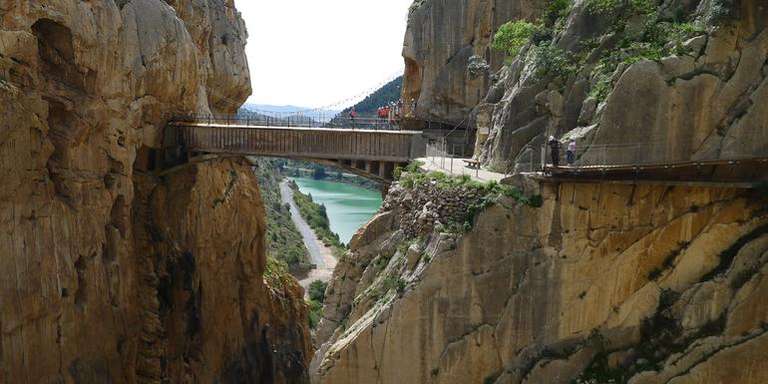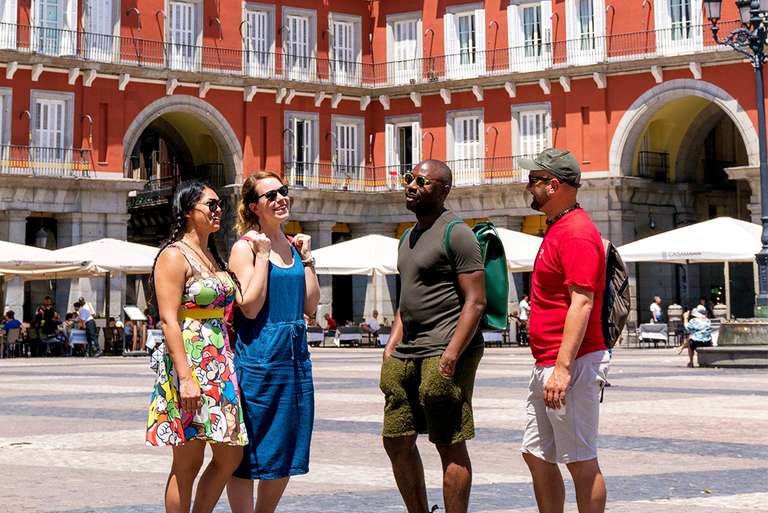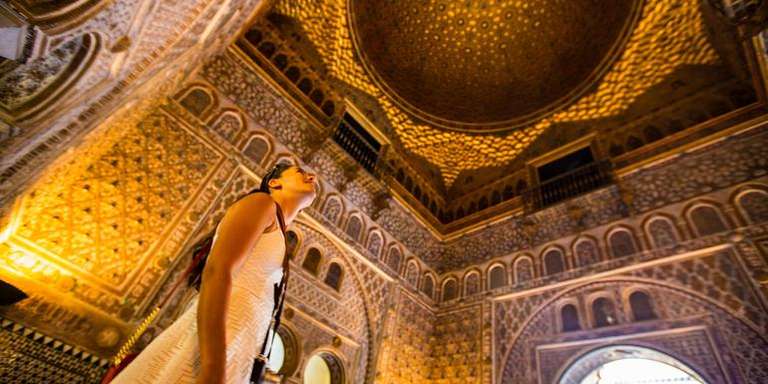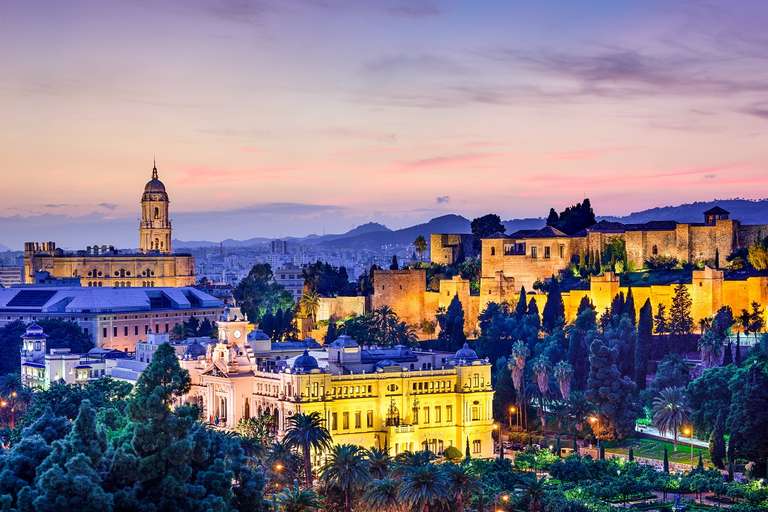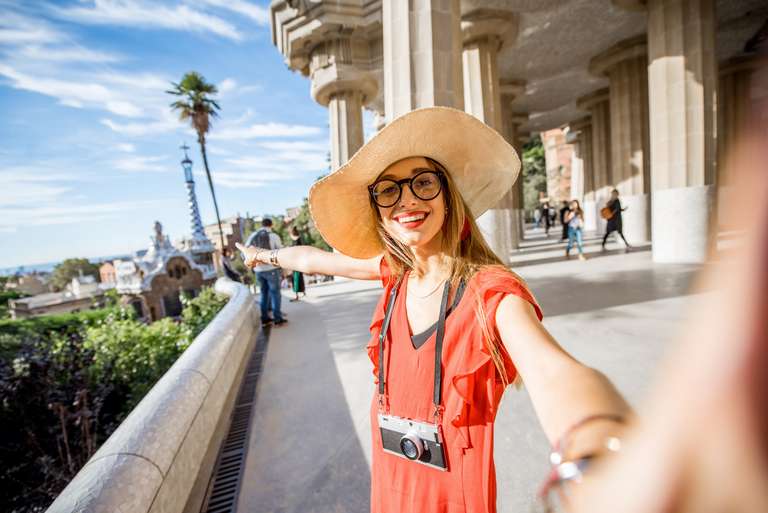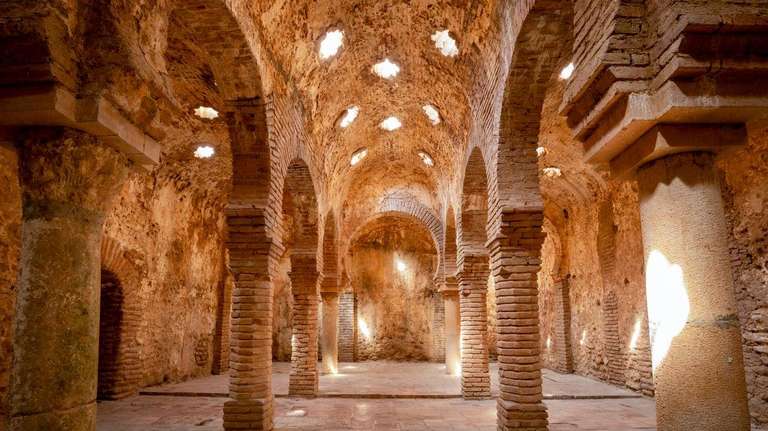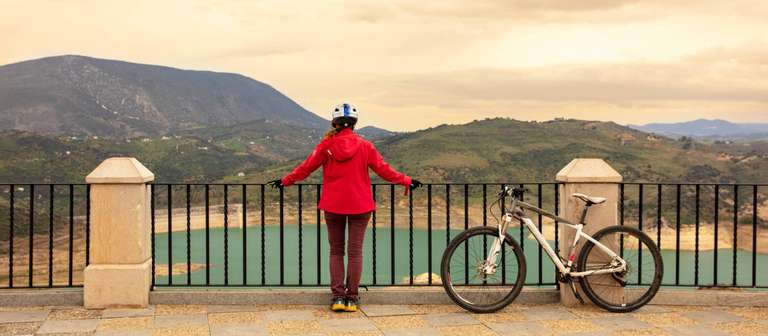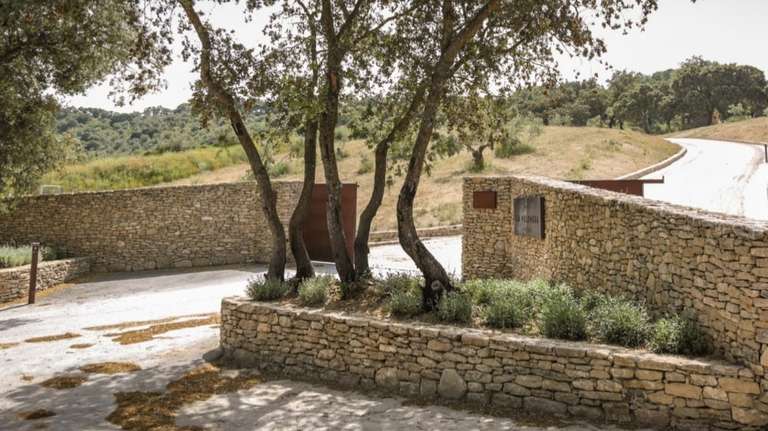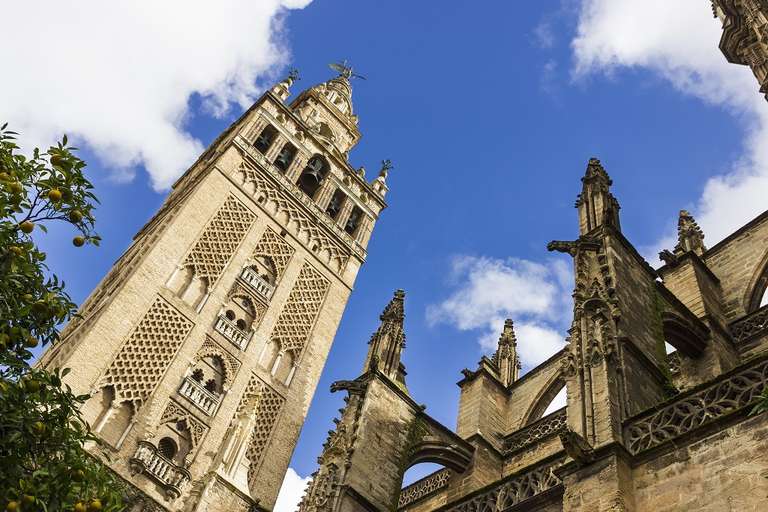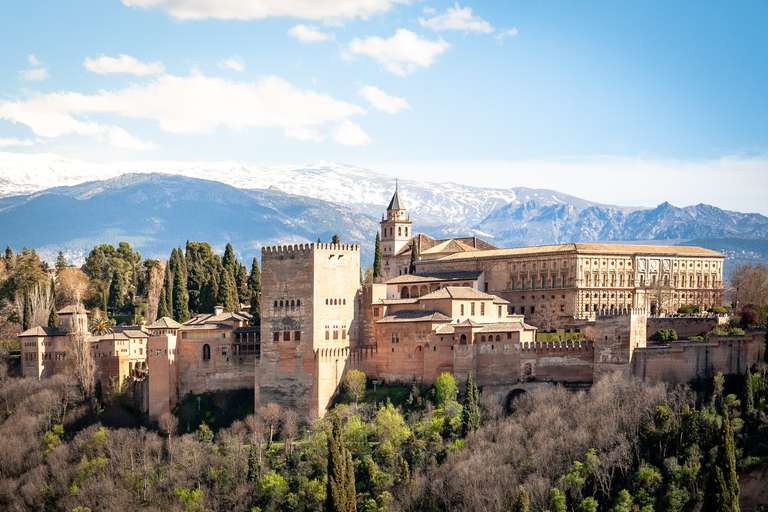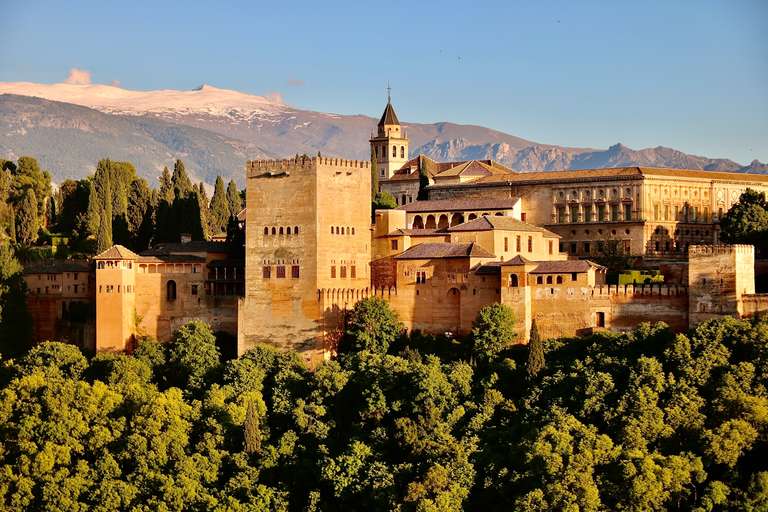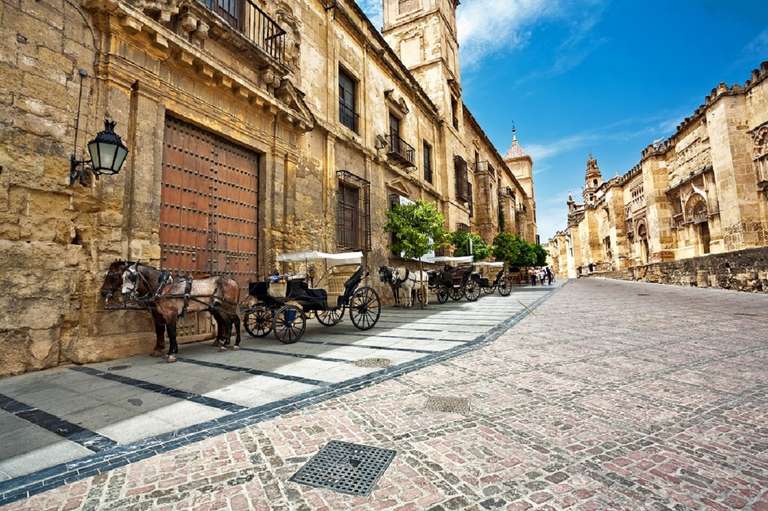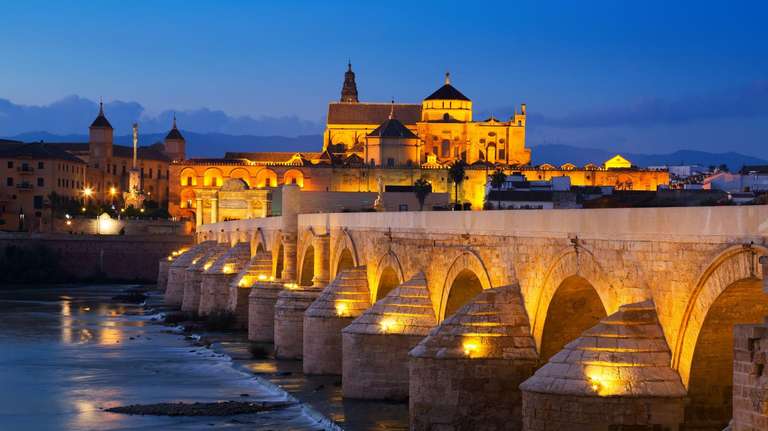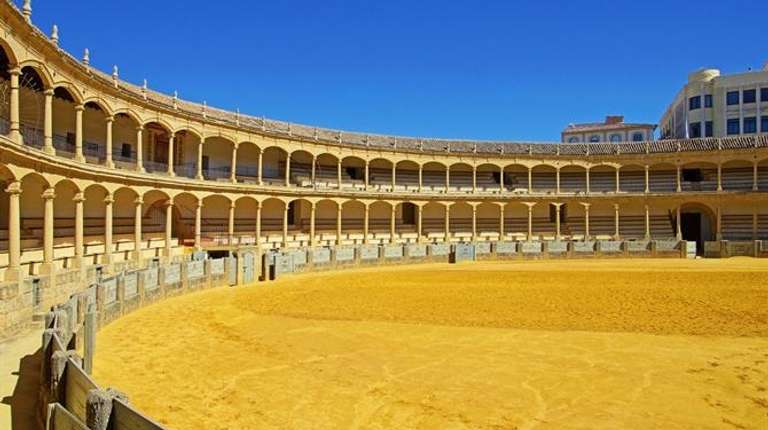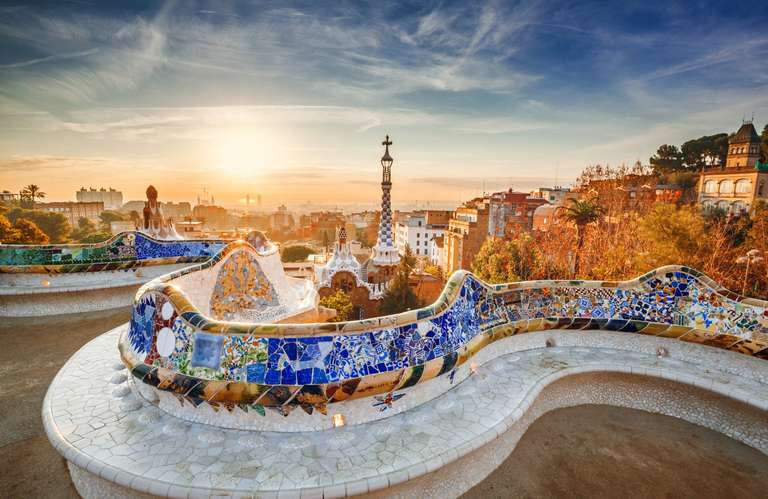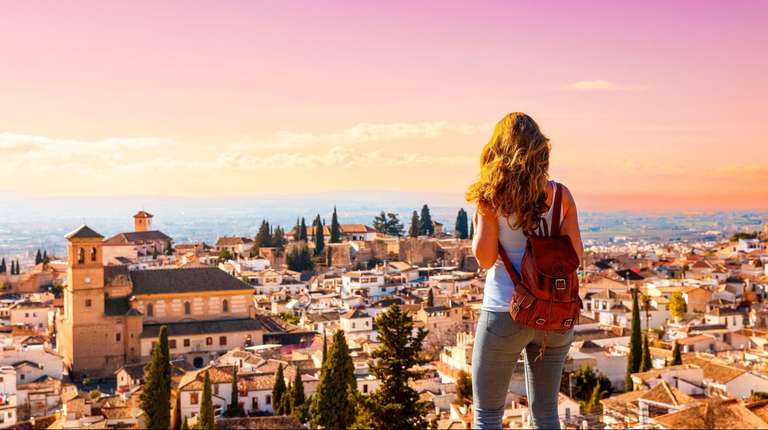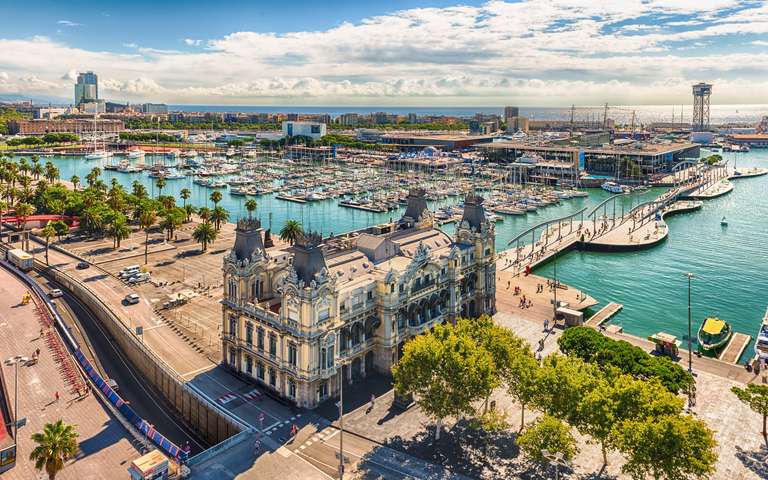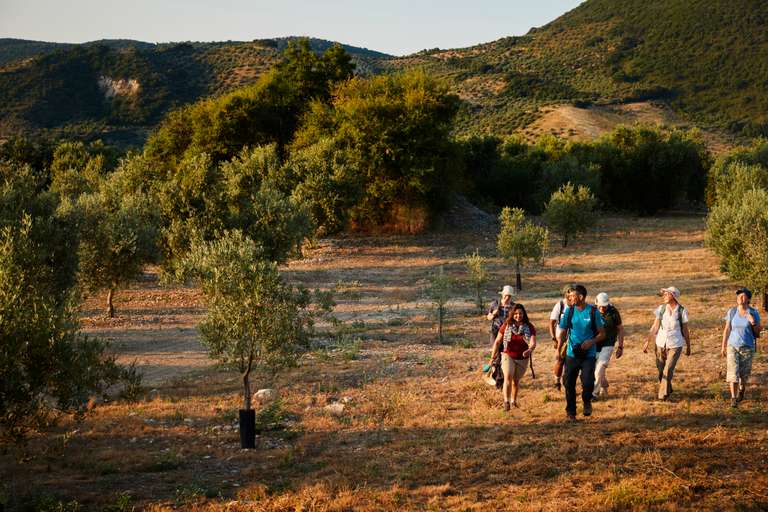Things to Do in Spain

- Mariam S
- From
- Mariam S
- From
- Brooke T.
- From
- Olivia D
- From
Construction of this breathtaking cathedral, dedicated to the Holy Family, first began in 1882 and still continues to this day. Legend has it that if Gaudi’s masterpiece of design is ever completed, the world will end, which is perhaps why it’s taking so long to finish! No trip to Spain is complete without a visit here. The cathedral is open daily, though restrictions apply during mass times. Be sure to dress appropriately and remember that some parts of the cathedral could be closed as construction continues.
Recommended activities:
- Take time to admire the intricate facades of the Sagrada Familia. Each facade tells a different part of the story of Christ's life.
- Climb the towers or take an elevator for breathtaking views of Barcelona. The Nativity and Passion facades have towers that are open to the public.
- Visit the museum inside the basilica to learn about the history and construction of La Sagrada Familia.
Best time to visit: Visit La Sagrada Familia in any season, But we recommend visiting early in the morning to avoid crowds.
Good to know: You can buy tickets for the cathedral online. A basic ticket costs around USD 26*, with more expensive options for audio guides, and the chance to go to the top of one of the cathedral’s towers, also available.
Insider's tip: Purchase skip-the-line tickets as the normal queue can get very long and better purchase in advance (around 3 to 5 days before your trip) so you can reserve a spot. It's good to visit this famous attraction when the sun is not so high up (around mid-morning or before sunset) so you can see its rays pass through the stained glass windows. You will be in awe of the beautiful colors glow inside the basilica because of the natural light. To learn more about its history, you can purchase an audio guide for a self-guided tour. — by Ed from Dubai Travel Blog

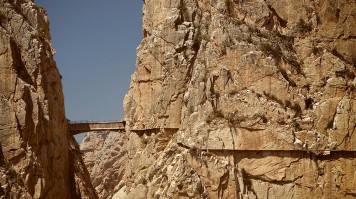
El Caminito del Rey, also known as ‘the King’s little pathway’ is a walkway straddling the side of the El Chorro gorge near Ardales in the province of Malaga. This is not an experience for the faint-hearted! Adrenaline junkies can traverse the 3-kilometre walk along a 1-meter wide path, 100 meters above the gorge floor below. Originally built as a route for workers at the hydroelectric power plant nearby, it now attracts thrill seekers from around the world. The path was closed for four years, reopening in 2015, following several deaths. Now though, it is possible to traverse the Caminito far more safely, but the excitement remains. As far as points of interest in Spain go this must be amongst the most hair-raising!
Recommended activities:
- Learn about Caminito del Rey’s history. The trails have information boards that provide insight into its construction and significance.
- Keep an eye out for local birdlife. The natural surroundings of Caminito del Rey are home to a variety of bird species including the Griffon vulture, golden eagle, and alpine swift.
Best time to visit: The best time to visit Caminito del Rey is during the spring season (March to June) when the flowers are in full bloom and the weather is pleasant.
Good to know: Tickets for the walk can be reserved online and cost around USD 12*. Guided walks are available, and you will need to be physically fit with a good head for heights!
Insider's tip: Book a few days in advance to secure the desired time-slot. Best go early to avoid the midday Mediterranean sun and bring plenty of water! Watch videos of daredevils taking old pathway on YouTube to understand why this was one of the most dangerous paths in the world. If time permits, be sure to take a detour to the quaint town of Ronda that’s only an hour’s drive away. It has an 18th-century bridge spanning over a 120M deep gorge that could take anyone’s breath away! — by Winny Wu from Travel with Winny
Find out more things to do in Malaga.
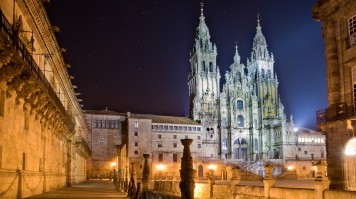
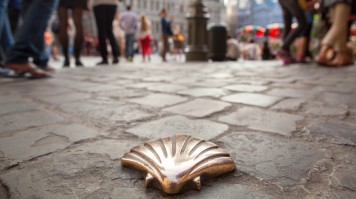
For those with an appetite for adventure, a hike along one of the numerous Camino pilgrimage trails to the city of Santiago de Compostela is a must. These ancient routes have been traversed by pilgrims for centuries. However, you don’t need to be religious to enjoy the sense of achievement and adventure that comes from following these long-distance footpaths across Northern Spain. Whether you walk for weeks and cover the entire route, or just take a few days to hike along some of the trails, you’ll find the challenge a rewarding one; after all, you will be following in the footsteps of thousands who have gone before. Just follow the white shells which mark the route!
Recommended activities:
- Visit the numerous churches, monasteries, cathedrals, and religious sites along the route. They feature beautiful artwork and many have historic value.
- Try the local dishes and specialties of the areas you pass through. Each region has its own culinary traditions for wines, cheeses, and dishes, like pulpo a la gallega (Galician-style octopus).
Best time to visit: The best months to visit the Camino Trail are May, June and September. The weather is pleasant during these months and rainfalls are less likely.
Good to know: There are numerous ways to walk the Camino. The most popular is the ‘Camino Frances’ which begins at St. Jean Pied de Port just across the border into France. It’s a good option for first-timers being well signposted, with plenty of accommodation en route.
Insider's tip: One of the best tips I can give before taking on the challenge that is the Camino, is to train. It's obviously difficult to train yourself to walk over a half marathon everyday for a month, but the more walking you can do before hand, the better position you'll find yourself in for success on the trail. That said, the Camino is a very 'come as you are' experience, and you can take as much time as you need; it's not a race, and no-one on the trail treats it as one. So even if you're not overly fit, if you've got time, you'll be fine. The only expectations you should travel with is that it will be challenging ... and that it will rain (so pack wet weather gear accordingly). — by Megan Jerrard from Mapping Megan
4. Eat tapas

Authentic Spanish tapas are a very different experience to the pale imitations one finds at home. This traditional way of serving food, a word which literally means ‘cover’ or ‘lid,’ allows you to sample numerous little dishes, perhaps alongside a glass or two of traditional sangria. Almost every bar and restaurant in Spain will serve tapas. Whether it be calamari, patatas bravas, or churros, order several plates each, and enjoy the experience of sharing food the Spanish way.
Recommended locations:
- San Sebastian is also known as the tapas capital. The old town (parte vieja) has a number of pintxos bars and offers a wide range of Basque-style tapas. Notable bars include Bar Nestor and La Chuchara de San Telmo.
- Seville is another must-visit place for tapas. Many bars offer complimentary tapas with your drinks. Make sure to visit El Rinconcillo—one of the oldest bars in the city.
- Los Diamantes and Bodegas Castañeda in Granada are also popular choices, along with other cities like Barcelona, Castile, Leon and Valladolid.
Best time to visit: You can enjoy tapas in any season!
Good to know: The Spanish like to eat late. If you go out expecting a meal around 7pm you’ll be disappointed. Instead, opt for a Spanish siesta and go out to eat with the locals when the restaurants are at their busiest around 10pm.
Insider's tip: When traveling in Spain the real way to get to know the culture is through its local gastronomy! Try tapas, traditional 3-course meals, and indulge in a special night out to a Michelin-starred restaurant. I would suggest if it is your first time in Spain, look for a local foodie expert to take you on a food-tasting walking tour through a city, or a day out to the rural countryside. After you know the ropes then you can explore more on your own! — by Tiernan from Eat & Walkabout
Also, check out our list of famous Spanish dishes to eat in Spain! We also have plenty of food tours in Spain if you’d like to join one.
5. Hike the Picos de Europa
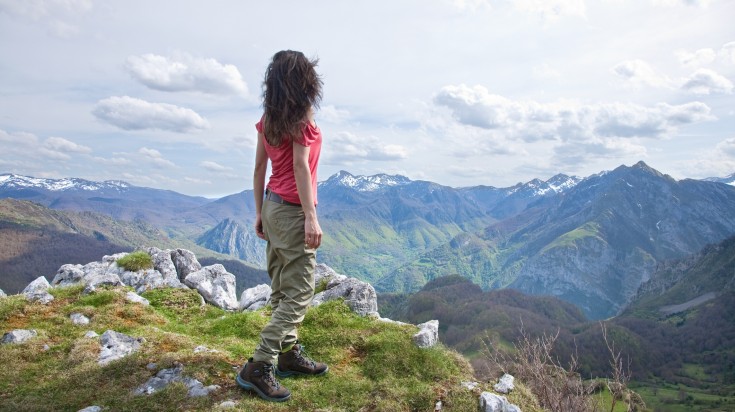
A holiday in Spain need not centre on the beach, or the historic landmarks. If getting out and about in the great outdoors is more your thing then walking in the Picos de Europa will be an ideal adventure. This mountain range lies around 20 km from Spain’s northern coast. Highlights not only include the mountains, but also some of the deepest caves in Europe including Torca del Cerro descending to a depth of 1589 meters!
Recommended activities:
- Spot wildlife such as chamois, ibex, eagles and vultures. The Picos de Europa are home to diverse flora and fauna.
- Consider exploring caves like Cueva del Sidron or Cueva del Soplao with a guided tour. The region is known for its intricate cave systems.
Best time to visit: The summer (June to September) is the best time to visit Picos de Europa. The remote trails to the mountain peaks are accessible and the weather is warm with little chance of rain.
Good to know: You can also join organized trips into the caves. When you are done exploring, sample the famous Cabrales cheese which this region is so well known for.
6. Take a flamenco lesson, or see it live

The Spanish love to party, and dancing is an integral part of many traditional celebrations. Spain’s national dance is the Flamenco, which originated in the southern parts of the country and has found itself exported as an icon of Spanish life. Across Spain you’ll find regular flamenco dancing laid on in bars and restaurants. Many will be more than willing to let a visitor try their hand (or feet) at it! Many of the larger hotels and resorts will offer lessons but more often than not its more fun to sit back and watch the professionals do their thing.
Recommended places:
- Flamenco originated in Andalusia, a must-visit destination for live flamenco performances. The best-known spots for flamenco dancing are Seville, Granada and Cordoba.
- Madrid is another popular destination for flamenco dances and there are often shows during the day as well as at night.
- Barcelona also boasts the art of flamenco in all its glory with shows like Palau de la Musica and Palacio del Flamenco.
Best time to visit: You can enjoy flamenco performances any time of the year.
Good to know: If you want to immerse yourself in the Flamenco culture, then head to Seville where you can find many places to see a live performance, along with plenty of places to learn it yourself.

If the Spanish are known internationally as party people, then in Spain it is the residents of Bunol, near Valencia, who are best known for throwing a more unusual sort of fiesta! It’s essentially a giant food fight involving la tomatina (the tomato). Beginning the evening before with a paella fest, the following morning sees crowds take to the streets, tomatoes in hand! This is certainly a side of Spanish tourism not intended for those wishing for a sedate and peaceful time. But if throwing tomatoes at strangers is your thing, then this is the festival for you. Also, don’t forget an old set of clothes!
Recommended activities:
- Join the parade to get into the festive spirit. The event usually starts with a parade featuring music, dancing, and colorful costumes.
- Try some traditional Spanish food and drinks from local vendors. Sangria, paella, and tapas are popular choices.
- Many bars and restaurants in Buñol host live music performances and parties during La Tomatina. It's a great way to unwind after the tomato fight.
Best time to visit: The festival is held in August every year.
Good to know: The festival takes place on the last Wednesday in August. Accommodation in Bunol is booked up months in advance so if you’re planning to stay be sure to book well ahead.

In the heart of Andalusia, Ronda is amongst the most picturesque town in Spain, and whilst its fame draws the crowds, its medieval heart retains an authentic Spanish feel. Perched atop of a mountain in Spain’s Malaga province, the town sits dramatically overlooking a deep gorge which separates the new and old town. Three bridges join the town together with the historic centre containing many points of interest to the visitor. Ronda is also known for the Corrida Goyesca, an annual bullfight held in the Plaza del Toros Ronda, the oldest bullring in Spain. Like it or not, the sport remains a central part of Spanish culture.
Recommended activities:
- Visit the iconic Puente Nuevo Bridge. It is one of Ronda’s most sought-after landmarks and offers spectacular views.
- Stroll through the charming narrow streets of old town. Its whitewashed buildings and historic architecture offer insight into the town’s culture and heritage.
- Enjoy views of the countryside and the gorge while relaxing at the Alameda del Tajo Park.
Best time to visit: Visit Ronda between March and December. The weather is pleasant during these months.
Good to know: Ronda is a fantastic place from which to take photographs. There are several viewpoints scattered around the town, or visit the Cuenca Gardens for panoramic vantage points across the gorge and town.
Insider's tip: Nestled among the hills of western Andalusia and surrounded by a seemingly endless number of olive groves, Ronda is a must in any Andalusian itinerary. This quaint little town is packed with culture, history and breathtaking views of the surrounding countryside. The absolutely jaw-dropping Puente Nuevo is a must-see. Be sure to walk out onto the bridge and look down into the gorge below to get a true feel for the incredible height of this incredible structure and appreciate its true magnitude. Allow some time to relax in the beautiful terraced Jardines de Cuenca and enjoy the stunning views of the surrounding hills, this is often overlooked by visitors to Ronda but should not be missed. If you’re looking for a little more action, don’t forget to check out the historic bullring in the centre of town. Join up to 5,000 spectators on fight-night inside the Real Maestranza, one of the most impressive and oldest bullrings in the country, or visit for a tour of the ring, which is widely touted as the home of modern-day bullfighting and a highlight of any trip to Ronda. — by Brian and Noelle from Wandering On
9. Hit the Beaches


Between the Atlantic and Mediterranean coasts and the Canary and Balearic Islands, Spain is home to several world-class beaches with very different features. Whether you’re looking for the perfect romantic getaway in a luxurious palm tree-filled paradise (we suggest Cala San Vicente in Mallorca), on the hunt for a family-friendly beach offering beauty and comfort (such as Santander’s El Sardinero Beach), or in search of a wild, undiscovered shoreline like Genoveses Beach in Andalusia —Spain has it all!
Recommended locations:
- Swimming in turquoise waters, cruising through massive sand dunes, and snorkeling with tropical sea life are only a handful of the many exciting things to do in Gran Canaria, a rugged scenic territory that lies closer to Africa than Europe.
- For a combination of clear blue waters and on-land fun, consider the favorite Spaniard destination of Alicante. Along with its world-class beaches, the popular location is surrounded by beautiful nature like the Reina Sofia Park and Alfonso XIII Park and also boasts tons of first-rate restaurants to refuel after a long day under the sun.
- While most tourists in Spain head to Mallorca or Tenerife to soak up the sun and sand, Malaga’s first-tier beaches that feature beautiful sights and ample entertainment, such as Playa de la Malagueta, get an undeserved second place.
- Getting a next-level tan isn’t the only activity in Malaga you’ll enjoy, though. As the birthplace of Pablo Picasso, another must-see stop and vital thing to do in Malaga is check out the Picasso Museum.
Best time to visit: Spain’s summer season falls from June to August, and this is the best time to enjoy the beaches in optimal weather.
Good to know: If life on the beach gets too ordinary then hire a car and make the journey out into the countryside where you’ll find the more traditional white washed villages and quiet picturesque countryside of this region of Spain.
If a beach holiday doesn’t peak your interest, you can join one of the many tours in Malaga.
10. Soak up the culture in Madrid

If you’re unsure of what to do in Spain, we recommend taking a multi-day pit stop to its vibrant capital city, Madrid. The bustling metropolis is best known for its unparalleled collection of art museums, including the Reina Sofia and the Prado Museum, but it boasts equally impressive historical attractions that are highly worth a visit.
Recommended stops:
- Touring the Palacio Real is among the top things to do in Madrid, if not all of Spain itself. The majestic palace is the biggest in Western Europe, boasting over 135,000 square meters of royal magnificence.
- Take a break from the city bustle at Retiro Park, a peaceful botanical oasis and UNESCO World Heritage site featuring Renaissance structures.
- Despite not dating back centuries as most other Madrid monuments, the Estadio Santiago Bernabéu is just as well-deserving of a tour. Home to soccer champions Real Madrid, the stadium is a key piece of Spanish culture.
Best time to visit: You can enjoy Madrid’s monuments year-round, but aim to visit from August to May to get a live look at a Real Madrid game.
Good to know: Visiting a museum each day in Madrid is ideal but may not be feasible. So, if you’re determined to see them all, join one of the numerous artistic tours of the city which will show you the highlights and often include all entrance fees.
Insider's tip: To adapt to the Spanish schedule — wake up early (8am), explore until 2pm and take afternoons to recover and get ready for the night. From 6pm on the streets are the liveliest. To get around Madrid I recommend to take the metro; it’s cheap and it brings you quickly to every sight.
If you have only 24 hours in Madrid, you need to visit Plaza Mayor, visit at least one museum like El Prado, explore the hipster neighbourhood of Chueca or Malasaña, have churros con chocolate in San Gines bar, tapas in La Latina neighbourhood and have dinner in the oldest restaurant in the world, El Botin. The suckling pig is their star dish! Eventually you’ll have the time to visit my favorite sight in Madrid: Templo Debod, an original Egyptian temple surrounded by a lush park offering beautiful views on Madrid and its parks. — by Paulina from Paulina on the Road
Take your pick from our list of Madrid tours.
11. Ski in Spain

Think Spain, and you do not automatically think of skiing, but take your winter break on the Spanish side of the Pyrenees and you will find good snow conditions throughout the season, as well as far quieter slopes than the equivalent in the Alps. Try the resort of Bernasque in the Posets-Maladetas nature reserve for superb cross-country skiing or Masella, just 90 minutes from Barcelona, making it popular with families and day trippers.
Recommended places:
- Sierra Nevada is one of the most popular destinations for skiing in Spain. It boasts more than 100 km of ski slopes and offers a long ski season from late November to early May.
- Baqueira-Beret resort is popular for its scenery and top-notch facilities. Located in the Pyrenees of Catalonia, this ski resort is one of the largest in Spain.
- Cerler is known for its stunning views and smaller crowds. It is ideal for both beginners and experts.
- Masella is known for its extensive night skiing options if that’s your jam!
Best time to visit: The optimal time to visit Spain for skiing is between November and March.
Good to know: If you want to combine sun and snow then choose to ski at the Sierra Nevada ski resort around an hour from Malaga, allowing you to spend the morning tanning yourself on the beach before driving the short distance into the mountains to hit the slopes — now that really is the best of both worlds!
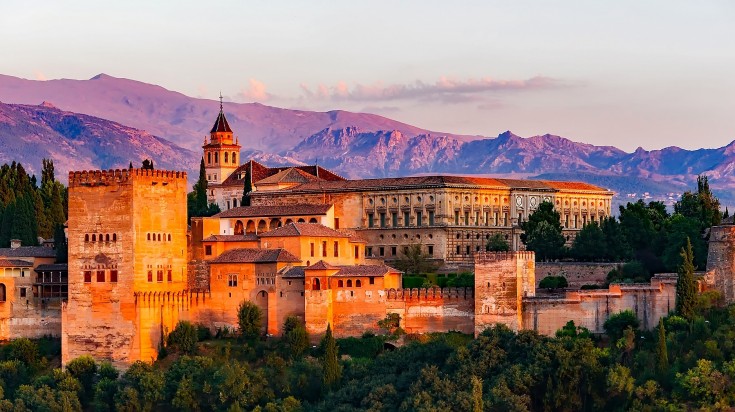
This giant fortress in the city of Granada is a must-see on any visit to this part of Spain. Originally constructed in 889 A.D, the current structures date mainly from the 13th century, a complex of palaces and fortifications. Being strategically positioned to oversee the whole city, it offers fantastic views from the ramparts. This UNESCO World Heritage Site is one of the most important historic destinations in Spain, and well worth a visit! Allow a day to see it properly.
Recommended stops:
- Explore the Nasrid Palaces for intricately designed rooms, courtyards and the gardens of the Palacios Nazaries, including the famous Patio de los Leones (Court of the Lions) and the Sal de los Abencerrajes.
- Visit the Generalife Gardens. Bask in the peaceful atmosphere surrounded by stunning views of the Alhambra and the city of Granada.
- See the Alcazaba and climb to the top for panoramic views of Granada.
Best time to visit: Visit Alhambra between March and June. The flowers are in full bloom during these seasons.
Good to know: Entrance to the Alhambra is around USD 19* per person and the fortress only opens fully between March and October so be sure to check before you travel. You might want to avoid visiting in the high summer months of July and August when the site becomes extremely busy, and the heat oppressive.
Insider's tip: Dedicate adequate time, both for queueing to get your tickets to enter and also for roaming the confines of the fortress. The gardens, quite so expansive, are so intricately groomed that almost every spot is picturesque. When you get to the rooftop, the rich blend of Moorish vernacular architecture is evident in the endless panoramic view of the Albaycin quarters. The intricate details of the artwork and carvings on the walls, pillars and ceilings are worth more than just a cursory glance — these are all stories to be unearthed. — by Isabel Leong from Bel Around the World
Check out our guide on things to do in Granada for more attractions and activities in Granada.
13. Explore the Spanish islands

The Spanish islands are as diverse as the mainland. From the party atmosphere of Ibiza to the quieter and more relaxed La Gomera in the Canary Islands, Spain boasts some of the most beautiful islands in Europe. Many of them are popular with families and groups and there is no end of package tours and customized Spain holidays available. Each island has its own unique flavour and whether you’re looking for a quiet family holiday or an all-night party you’ll find an island that’s just right!
Recommended stops:
- Visit Mallorca—the largest of the Balearic Islands—known for its stunning beaches, mountain landscapes and historic towns.
- Ibiza is famous for its vibrant nightlife and beautiful beaches. The island is ideal for partygoers and beach lovers alike. However, you will also find tranquil villages, lush countryside and historical sites—making it a versatile destination.
- The Canary Islands are a must-visit for its diverse landscapes and the stunning sand dunes of Maspalomas.
Best time to visit: Spring (March to June) and fall (September and October) the best months to visit the Spanish Islands for a quieter holiday with good weather, but the islands are beautiful anytime.
Good to know: The resorts of the Spanish islands can get very busy, but the interiors offer strikingly beautiful landscapes and a quieter, more relaxed pace of life. Hire a car, and head inland for some peace and a more authentic Spanish feel.
There are countless things to do in Spain, but this selection lists some of the highlights. Wherever you choose to travel, and whatever you choose to experience, you can be assured that Spain’s attractions will not disappoint!
14. Tour Gaudi’s Iconic Architecture in Barcelona

There are countless world-class things to do for sightseeing in Barcelona, but exploring Gaudi’s fascinating monuments ranks among the best activities this bustling city has to offer. It’s hard not to miss Gaudi’s otherworldly architecture in the city — it pops out among the sea of neoclassical and modernist buildings. Characterized by brilliant colors and voluminous texture, Gaudi’s astonishing monuments pioneered the Catalan art nouveau movement and remain popular today thanks to their innovative design and alluring appeal.
Recommended stops:
- As the crown jewel of Gaudi’s work, the Sagrada Familia is an absolute must-see when visiting Barcelona. The futuristic basilica boasts a massive design characterized by avant-garde stonework structures and sculptures filtered out through colorful stained glass windows. True works of art are always evolving, and the Sagrada Familia is no exception; since its creation in 1882, the basilica is still unfinished to this day.
- Also known as La Pedrera, Casa Milá has an intriguing facade pulling inspiration from nature, but its best features lie in the home’s interior —- not to mention the otherworldly terrace with 360° views of Barcelona.
- If you want to experience the best views in Barcelona, head straight to Parc Güell. Astonishingly, the park’s stunning panorama isn’t even the best feature it has to offer—its creative curved and geometrical elements, along with its colorful mosaics, are what really steal the spotlight.
- Dreamy Casa Batlló is made of colorful curved tiles that resemble the waves of the sea or the back of an iguana. Its shimmering exterior and cutting-edge detail-oriented interior seamlessly blend beauty and functionality, creating a mystic atmosphere up for interpretation.
Best time to visit: Anytime. These attractions are open year-round.
Good to know: The Sagrada Familia is Spain’s most visited attraction, with Gaudi’s other architectural monuments ranking in as a close second. That means long lines are just as guaranteed as great views. To spare yourself hours in a queue, consider booking tickets online beforehand.
15. Celebrate one of the World’s Biggest Festivals, Las Fallas in Valencia

Of all the things to do in Valencia, the annual Las Fallas celebration remains among the most legendary. Get ready for a fun-filled week of next-level fireworks, colorful (and loud) gunpowder spectacles, and enchanting towering statues in nearly every charming street corner. Take your pictures by the whimsical monuments before the final day, though, when the detailed art pieces get burned to the ground in a dramatic and fun-filled closing ceremony that fills the city with sky-high bonfires around every block.
Recommended activities:
- Stop by the Plaza de la Virgen after the two-day Flower Ofrenda for a fabulous photo-op of a 15-meter flower-filled statue of the Virgin Mary.
- Catch the award-giving ceremony on March 17. With over 750 sculptures across Valencia, it’s an interesting, competitive, and culturally significant event.
- Don’t miss the ultimate firework display on the Nit del Foc, which is among the most sophisticated and carefully curated across the globe.
Best time to visit: Las Fallas occurs annually from March 15–19th, so be sure to book your tickets between those dates. If you can’t make it in time, no worries, you can still catch the mascletà, a dynamic pyrotechnic performance, in the Plaza del Ayuntamiento each afternoon starting March 1st.
16. Indulge in Wild Nightlife

One of the best activities in Spain if not the top thing to do in Spain—is letting loose from dawn ‘til dusk. Spain’s massive mega-clubs, like Pacha and Ushuaia, boast next-level atmospheres and headline the world’s biggest DJs. It doesn’t matter if you’re a regular clubgoer or simply want a taste of the after-hours lifestyle, to truly experience Spain’s culture, a healthy dose of partying is essential.
Recommended locations:
- Ibiza and Barcelona take the crown when it comes to lavish clubs, with Andalusia unfairly falling under the radar. However, club-hopping through historical streets is among the greatest things to do in Seville and Granada.
- Consider dancing your heart away in Spain’s capital, Madrid, which is home to the techno mecca, Fabrik, and the seven-floor venue, Kapital.
Best time to visit: The biggest parties in Spain are hosted in the summer, so you’ll want to visit from June through August to make the most of your festivities.
Good to know: Spaniards are famous for doing everything late, so you can safely book your tapas date around 11 pm and head to the club at 1 am or later. Chances are it won’t be open before then anyway.



